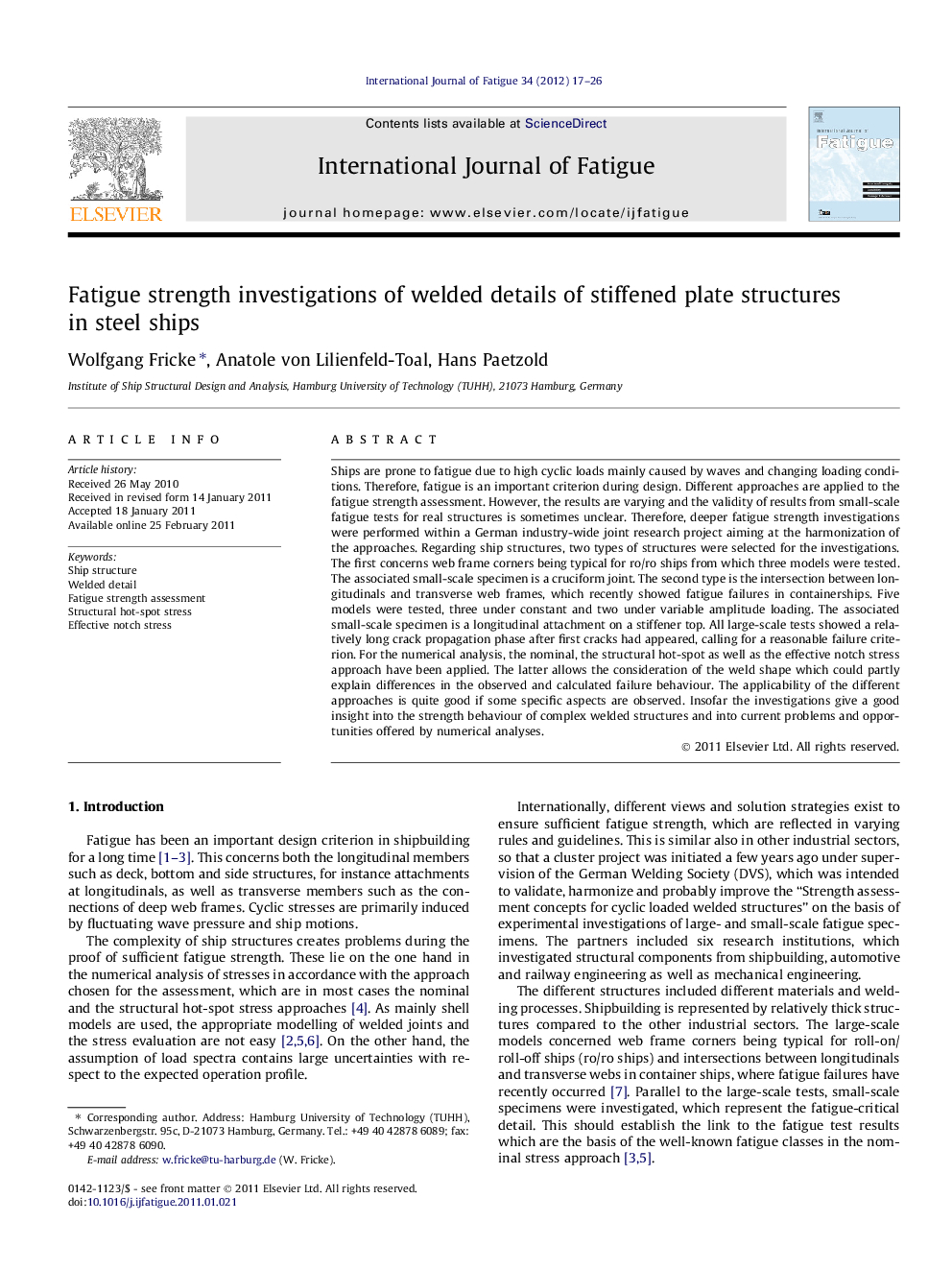| Article ID | Journal | Published Year | Pages | File Type |
|---|---|---|---|---|
| 775378 | International Journal of Fatigue | 2012 | 10 Pages |
Ships are prone to fatigue due to high cyclic loads mainly caused by waves and changing loading conditions. Therefore, fatigue is an important criterion during design. Different approaches are applied to the fatigue strength assessment. However, the results are varying and the validity of results from small-scale fatigue tests for real structures is sometimes unclear. Therefore, deeper fatigue strength investigations were performed within a German industry-wide joint research project aiming at the harmonization of the approaches. Regarding ship structures, two types of structures were selected for the investigations. The first concerns web frame corners being typical for ro/ro ships from which three models were tested. The associated small-scale specimen is a cruciform joint. The second type is the intersection between longitudinals and transverse web frames, which recently showed fatigue failures in containerships. Five models were tested, three under constant and two under variable amplitude loading. The associated small-scale specimen is a longitudinal attachment on a stiffener top. All large-scale tests showed a relatively long crack propagation phase after first cracks had appeared, calling for a reasonable failure criterion. For the numerical analysis, the nominal, the structural hot-spot as well as the effective notch stress approach have been applied. The latter allows the consideration of the weld shape which could partly explain differences in the observed and calculated failure behaviour. The applicability of the different approaches is quite good if some specific aspects are observed. Insofar the investigations give a good insight into the strength behaviour of complex welded structures and into current problems and opportunities offered by numerical analyses.
